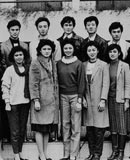不支持Flash
|
2007年Text 2
For the past several years, the Sunday newspaper supplement Parade has featured a column called “Ask Marilyn." People are invited to query Marilyn vos Savant, who at age 10 had tested at a mental level of someone about 23 years old; that gave her an IQ of 228 -- the highest score ever recorded. IQ tests ask you to complete verbal and visual analogies, to envision paper after it has been folded and cut, and to deduce numerical sequences, among other similar tasks. So it is a bit confusing when vos Savant fields such queries from the average Joe (whose IQ is 100) as, What's the difference between love and fondness? Or what is the nature of luck and coincidence? It's not obvious how the capacity to visualize objects and to figure out numerical patterns suits one to answer questions that have eluded some of the best poets and philosophers.
Clearly, intelligence encompasses more than a score on a test. Just what does it mean to be smart? How much of intelligence can be specified, and how much can we learn about it from neurology, genetics, computer science and other fields?
The defining term of intelligence in humans still seems to be the IQ score, even though IQ tests are not given as often as they used to be. The test comes primarily in two forms: the Stanford-Binet Intelligence Scale and the Wechsler intelligence Scales (both come in adult and children's version). Generally costing several hundred dollars, they are usually given only by psychologists, although variations of them populate bookstores and the World Wide Web. Superhigh scores like vos Savant's are no longer possible, because scoring is now based on a statistical population distribution among age peers, rather than simply dividing the mental age by the chronological age and multiplying by 100. Other standardized tests, such as the Scholastic Assessment Test (SAT) and the Graduate Record Exam (GRE), capture the main aspects of IQ tests.
特别说明:由于各方面情况的不断调整与变化,新浪网所提供的所有考试信息仅供参考,敬请考生以权威部门公布的正式信息为准。





